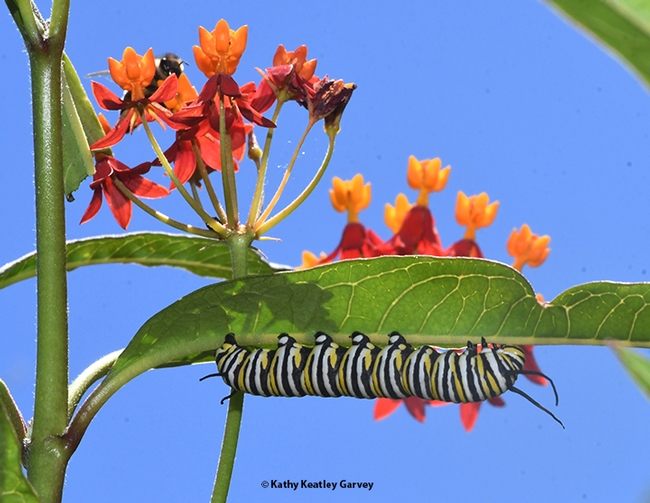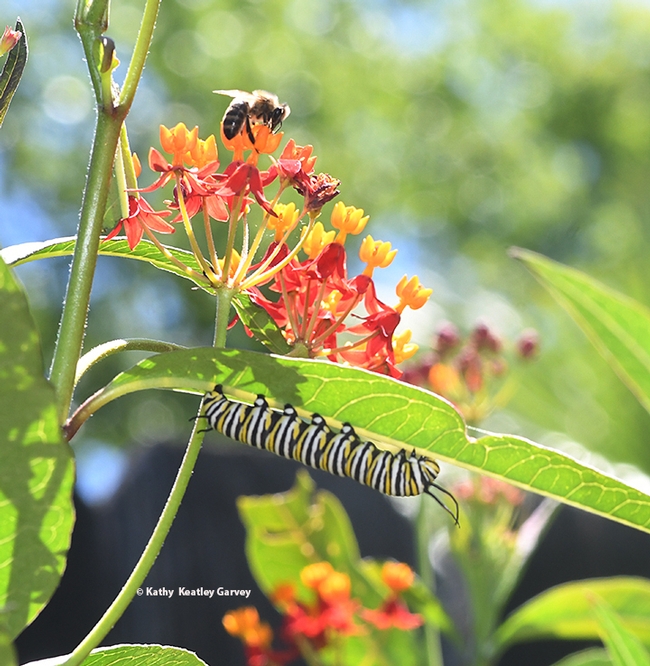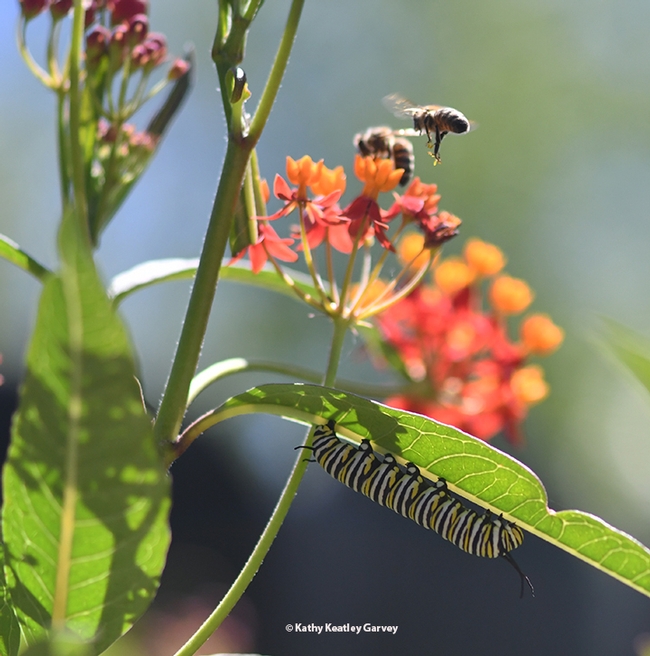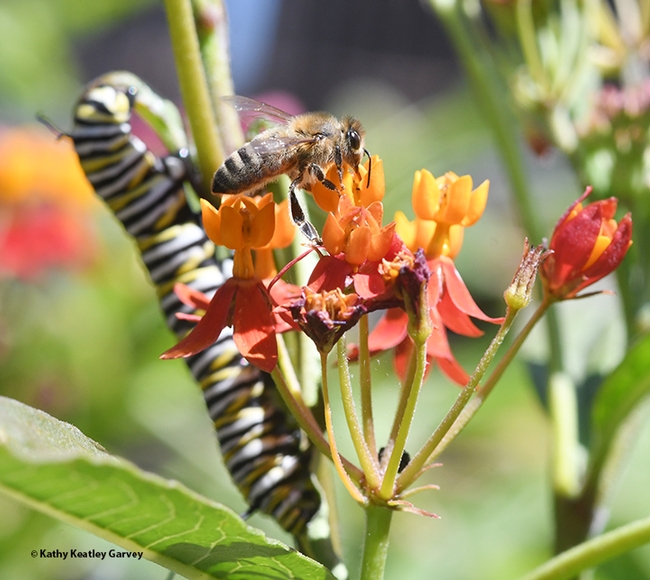Picture this during National Pollinator Week: five monarch caterpillars and assorted honey bees sharing tropical milkweed.
It was love at first bite. Or love at first sip.
The 'cats kept munching and the bees kept foraging. Neither species seemed interested in the other.
But the adult monarchs definitely showed more interest in the tropical milkweed (Asclepias curassavica), a non-native, than the other two species, both natives, that we planted: the narrow leaf (A. fascicularis) and showy milkweed (A. speciosa).
They laid eggs only on the tropical milkweed, and so far, have produced five caterpillars.
The score to date:
Tropical milkweed: 5 caterpillars
Narrow leaf milkweed: 0
Showy milkweed: 0
Reminder: Folks planting the tropical milkweed in temperate zones (like here in Vacaville,Calif.) must remove or cut back the tropical milkweed by winter. "A protozoan parasite of monarch butterflies, Ophryocystis elektroscirrha or OE for short, can travel with monarchs visiting the plants and become deposited on leaves," explains the Xerces Society for Invertebrate Conservation.
Yes, indeed. But meanwhile, we're witnessing untold sharing on the wildly popular tropical milkweed by not only monarch caterpillars but honey bees, syrphid flies, bumble bees, carpenter bees, leafcutter bees and sweat bees.
We gardeners and photographers are also drawn to the spectacular red, orange and yellow flowers that add both beauty and color to a cherished pollinator patch in the midst of the COVID-19 pandemic...and National Pollinator Week.
Attached Images:

Peek a bee! A honey bee forages on tropical milkweed blossoms while a monarch caterpillar chows down. (Photo by Kathy Keatley Garvey)

Sharing during National Pollinator Week: a honey bee and a monarch caterpillar on tropical milkweed. (Photo by Kathy Keatley Garvey)

Two honey bees go about their "bees-ness" while a monarch caterpillar dines. Milkweed is the host plant of the monarchs. (Photo by Kathy Keatley Garvey)

Close quarters: a honey bee and a monarch caterpillar on tropical milkweed. (Photo by Kathy Keatley Garvey)